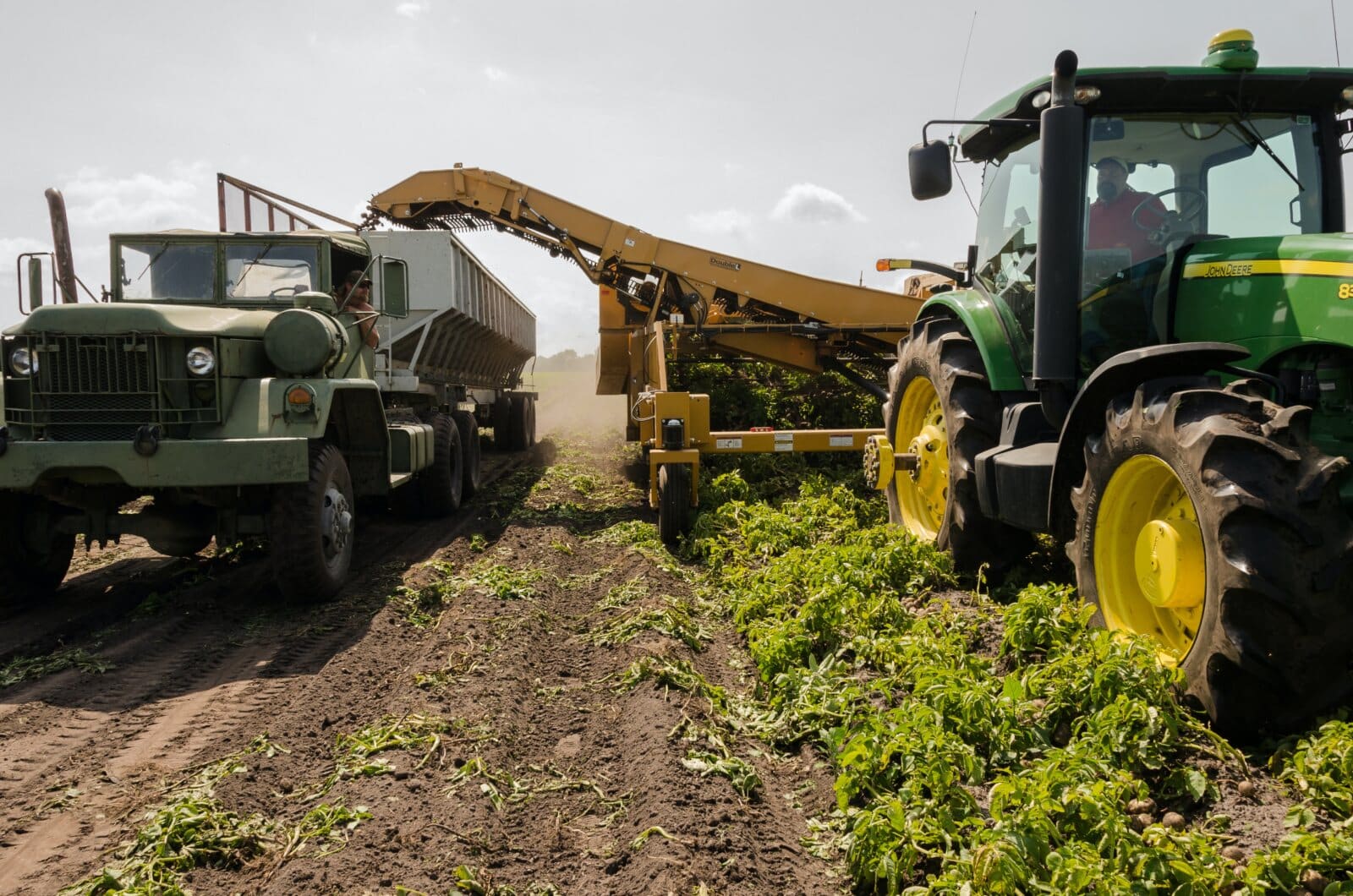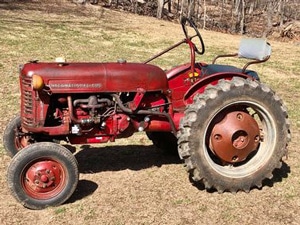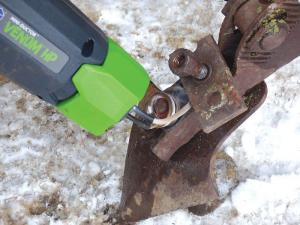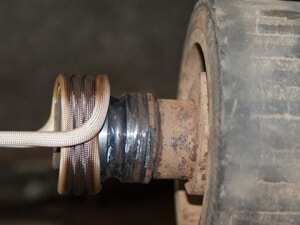
In farming, efficiency is key. Downtime while key equipment is repaired or serviced can equal lost revenue, as opportunities can be fleeting and schedules must be kept to throughout the farming calendar.
This is something Stuart, Andrew and Jamie Crichton of R&C Crichton know well. As a company, the farm carries out contract work on over 700 acres every year, while their own land produces a yield of 8-10,000 tons of turnips per year.
All that requires the might of multiple pieces of equipment, each vital in its own way to the running of the farm. Between them, the Crichtons operate five tractors, three forklifts, plus all manner cultivators, plows and rollers, carrying out as much maintenance in-house as possible in order to keep costs to a minimum and ensure the longevity of each piece of equipment.

This maintenance can take place in a variety of environments. There are no pristine workshops on the farm, and barns often house valuable stores of seeds which, combined with the dusty, dry environment, can make wielding a naked flame potentially hazardous.
Often, maintenance will need to take place on-the-go. If a piece of equipment fails while in-use, it’s imperative where possible to carry out the repair in-situ to minimize downtime and ensure it is fully operational as soon as possible.
Oxy-acetylene torches with their large, cumbersome – and potentially volatile – fuel tanks are often unsuited to the job at hand, while the expense of licensing and annual rental of the tanks can be uneconomical for a farm.
Bearing Replacement Made Easy
The Grimme GT70S is a vital piece of equipment in the Crichtons’ arsenal come harvest time. Collecting and cleaning of a high capacity of crops is handled gently thanks to a two-row belt-driven conveyor, which includes a Double MultiSep separator to help it deal with changing conditions while shaking off any dust, dirt and rocks that may be picked up at the point of collection to allow for easy sorting by a team situated on board.
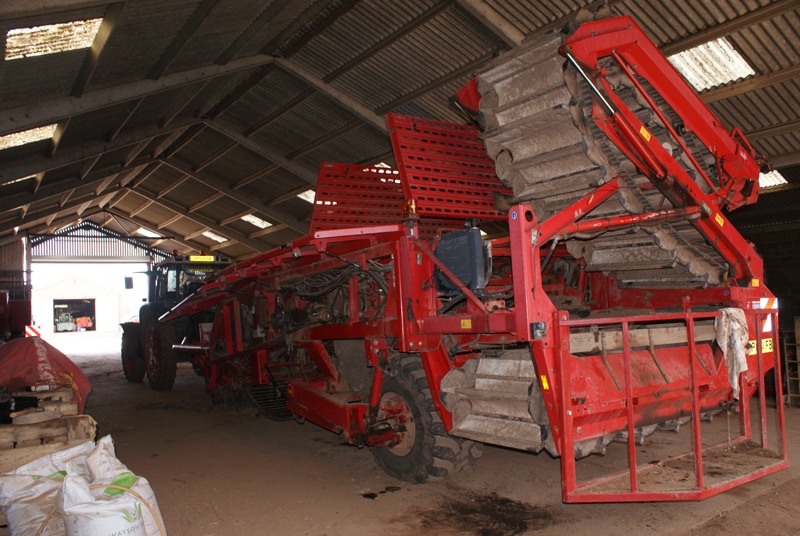
To do this, the machine uses a system of belt pulleys and wheels – each of which has its own bearing to keep it running smoothly. Some 60 bearings are employed in the smooth running of the machine, and failures can occur at different rates depending on different parts of the machine. “Around seven out of ten breakdowns on these machines are down to failed bearings,” explained Stuart Crichton.
Costing around $178,000 new, regular maintenance – including changing of the bearings – can see a Grimme GT70S last as long as 25 years.
Removing and changing the bearings is a fairly straightforward process, and one that the Crichtons are accustomed to, but heating is often required to loosen the used bearings. It can be time consuming and frustrating as failed bearings are often difficult to remove from the shaft, while use of a grinder or torch to remove a bearing’s tight-fitting sleeve can lead to damage of the valuable shaft; replacement of any one of the 30+ shafts on the Grimme GT70S can cost upwards of $500.
The induction heating of the Mini-Ductor® Venom® is commonly used in the automotive sector to free steering and suspension parts, frozen O2 sensors, ball joints, and tie rod ends. In farming, the Mini-Ductor Venom can quickly free up stubborn serviceable components, such as a used bearing housing on the Grimme GT70S shafts, and each coil lasts up several hundred uses.
For seized parts needing a coil diameter of greater than 1 3/4″ to heat them, the Bearing Buddy coils are ideal with lengths ranging from 41″ to 96″.
How to Remove Stubborn Bearings Quickly & Safely
Equipment needed: heat resistant gloves overalls, goggles and a respirator mask (if smoke will be produced from heating)
Knowledge required: a well-reviewed proficiency of the tools’ safety and operating instructions
STEP 1: Remove outer casing of bearing so just inner sleeve is left
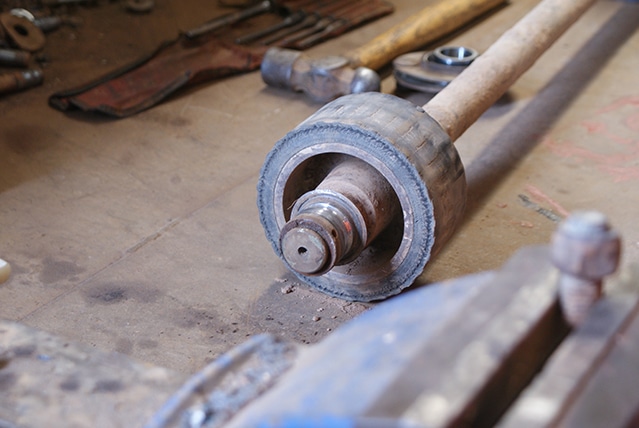
STEP 2: Wrap the coil around the bearing and heat using Mini-Ductor Venom
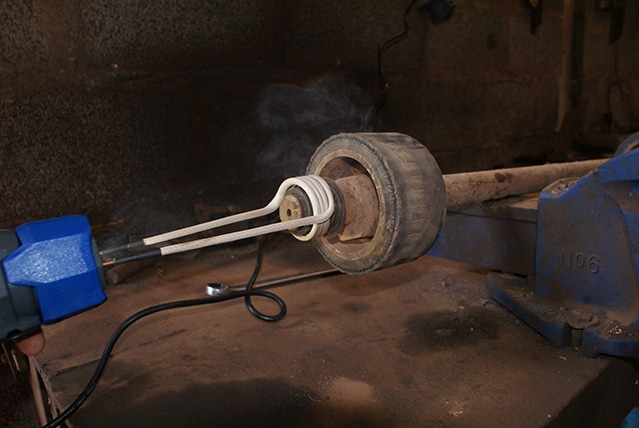
STEP 3: Remove the coil from area and loosen bearing sleeve with chisel
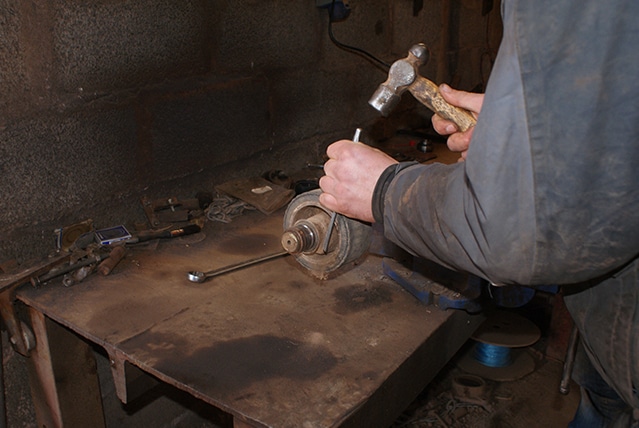
STEP 4: Repeat as required until bearing is freed from shaft
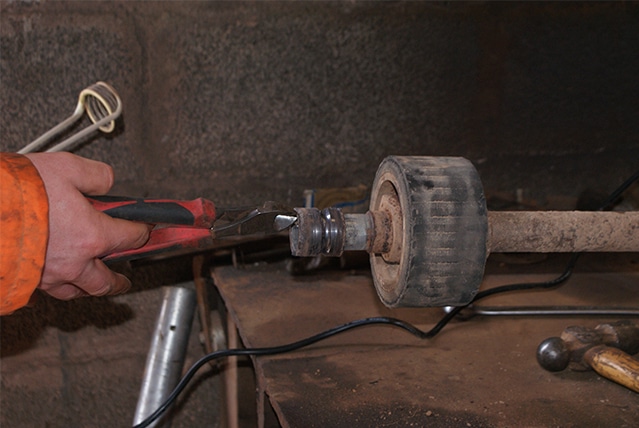
In the hands of the Stuart Crichton, a stubborn used bearing was removed from its shaft in a matter of minutes, leaving the shaft unmarked. Consider again the number of bearings that can need replaced on the Grimme GT70S in one season and the time savings quickly mount up.
To demonstrate the difference between removing a bearing sleeve from a shaft using flameless heat and using a grinder to cut the sleeve free, Stuart employed the grinder on an old shaft, with the results clear to see; the grinder removed the sleeve in a cacophony of sparks, and left the shaft with a flat-face, impairing its ability to be gripped by the replacement bearing.
Thanks to its compact size and ability to run on a mains electricity supply, the Mini-Ductor Venom is also portable. Combined with an inverter it can easily be taken to the field in a vehicle for quick deployment in the eventuality of a failed bearing during operation.
After their experience with the Mini-Ductor Venom with the Grimme GT70S, the Crichtons were already considering the possibilities with the myriad other maintenance tasks they carry out regularly on equipment – changing blades on plows and their bed tiller (which has upwards of 192 bolts, each of which require changing once a year!) seized or stubborn bolts sealed with Loctite and tractor wheel nuts. As Jamie Crichton put it – “if it can do that it will do just about anything.”
Contact us to learn more about the Mini-Ductor Venom portable induction heater
